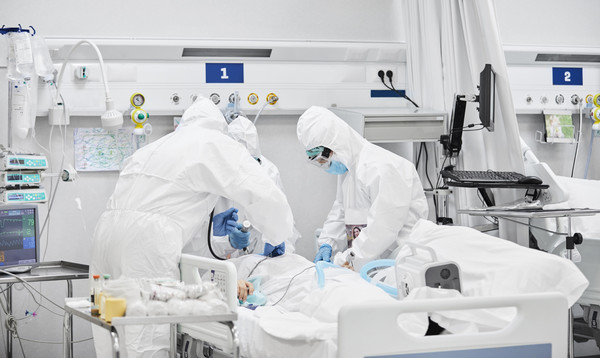The Covid-19 pandemic did not come to an end in 2021. The pandemic was the most worrying social issue this year. Korea has been fighting Covid-19 for two years but is still struggling. The pandemic was not the only issue in the medical community this year. For the first time in the world, Korea enacted legislation to mandate the installation of surveillance cameras in operating rooms. Korea Biomedical Review has compiled the five biggest medical industry stories in 2021. – Ed.

The Covid-19 pandemic that has been ongoing for nearly two years made people extremely fatigued. On Oct. 23, health data showed that over 70 percent of the Korean population received at least one dose of a Covid-19 vaccine.
The data gave the health authorities a reason to push for easing social distancing rules and returning to normalcy.
On Oct. 29, the government announced measures to ease quarantine rules gradually, and the new rules went into effect on Nov. 1. In addition, the government said mild Covid-19 patients would be treated at home as default and relaxed social distancing.
The measures were based on the high vaccination rate, combined with growing voices for economic recovery.
However, some experts, including doctors, warned that relaxed social distancing should come after fully preparing the medical response system.
Aware of the issue, the health authorities left room for emergency measures in case a constant rise in critical cases and deaths overwhelmed the health system.
The government said it would take emergency measures if intensive care units and hospital beds near capacity if critical cases and deaths surge and if the pandemic outbreak becomes extensive.
Unfortunately, the time for emergency measures came faster than expected. As the number of Covid-19 cases surged after eased social distancing, the health authorities gave an administrative order to secure Covid-19 beds on Nov. 5, only five days after announcing the “Living with Covid-19” policy.
Within two weeks after relaxing social distancing, 76 percent of the ICUs were occupied, and critical Covid-19 cases started to shoot up. On Nov. 12 and Dec. 10, the government had to give an administrative order to mobilize beds from private hospitals.
Still, the number of daily Covid-19 cases rose from 3,880 on Nov. 25 to 7,140 on Dec. 8.
On Dec. 21, the number of critically ill Covid-19 patients hit a record high of 1,022.
About 79 percent of ICUs across the country and 85 percent of those in the Seoul metropolitan area are occupied, meaning that the health system has nearly collapsed. The worsened situation came faster than the medical community had expected.
In the end, the health authorities re-introduced strict social distancing on Dec. 18, limiting the number of people’s private gatherings to four across the country until Jan. 2, 2022.
The measure reversed the previous plan to get ready for a return to normal life.
President Moon Jae-in apologized for failing to make adequate preparations and restoring tough social distancing.

